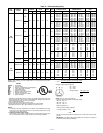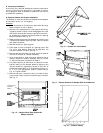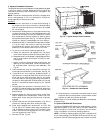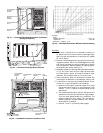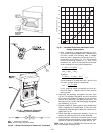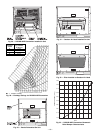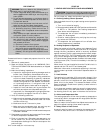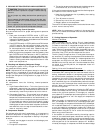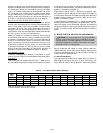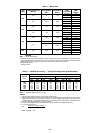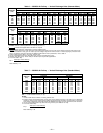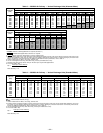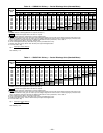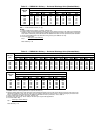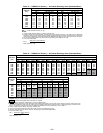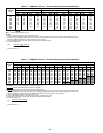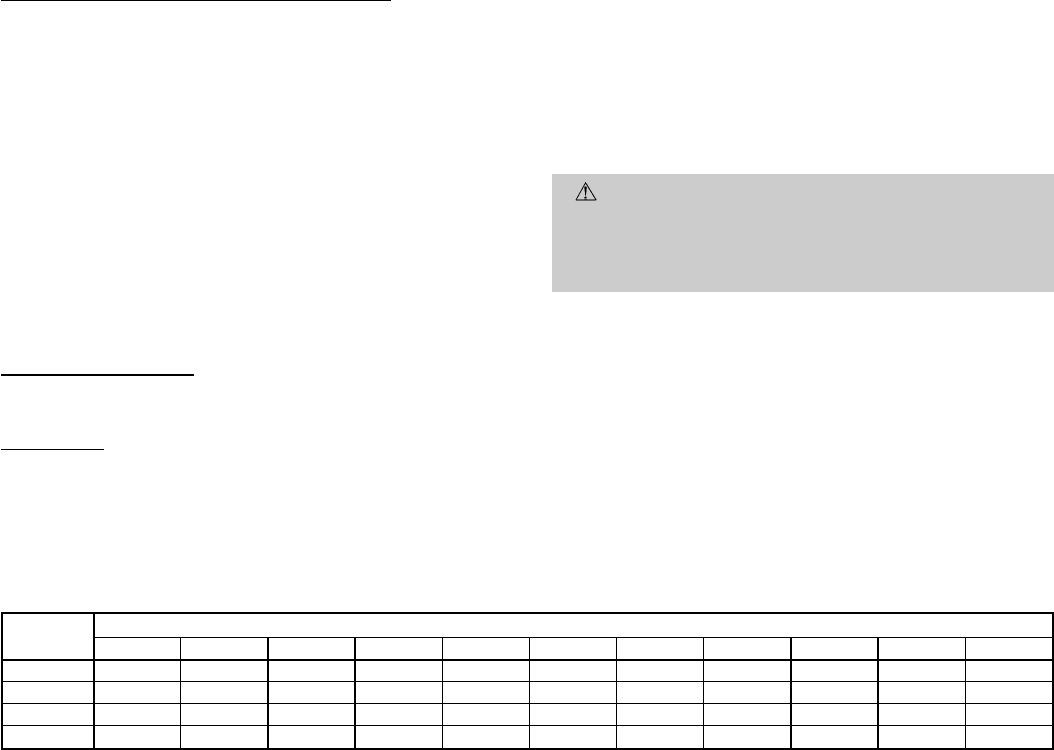
of cooling is satisfied, the compressor and OFM will be deen-
ergized. The damper position will be determined by the supply-
air temperature. When the first stage of cooling is satisfied,
there is a 30-second delay before the evaporator fan shuts
off. The damper then moves to the fully closed position. When
using a continous fan, the damper moves to the minimum
position. Additional information on economizer operation is
provided in the Ventilation Sequence section on page 27.
Cooling, Units With PARABLADE Economizer
When the outdoor-air is above the enthalpy control setting,
and the room thermostat calls for cooling, the compressor con-
tactor is energized to start the compressor and the outdoor
(condenser) fan motor. The indoor (evaporator) fan motor is
energized and the economizer damper moves to the mini-
mum position.After the room thermostat is satisfied the damper
will spring return to the fully closed position.
When the outdoor-air is below the enthalpy control setting
and the thermostat calls for cooling, the economizer outdoor-
air damper is opened proportionally to maintain between 50
and 56 F at the mixed-air sensor. If outside air alone cannot
satisfy the cooling requirements, economizer cooling is inte-
grated with mechanical cooling. When the room thermostat
is satisfied, the damper will spring return to the full closed
position. Additional information on economizer operation is
provided in the Ventilation Sequence section on page 27.
Time Guard II Device
If the unit is equipped with accessory Time Guard II recycle
timer, the unit will delay 5 minutes between compressor starts.
Controls Kit
Loss-of-Charge/Low-Pressure Switch (LPS) — When the liq-
uid line pressure drops below 7 psig, the LPS opens 24-v power
to the compressor contactor and stops the compressor. When
the pressure reaches 22 psig, the switch resets and the com-
pressor is allowed to come back on.
High-Pressure Switch (HPS) — When the refrigerant high-
side pressure reaches 428 psig, the HPS opens 24-v power to
the compressor contactor and stops the compressor. When the
pressure drops to 320 psig, the switch resets and the com-
pressor is allowed to restart.
Freeze-Protection Thermostat (FPT) — When the evaporator-
coil leaving refrigerant temperature drops below 30 F, the FPT
opens 24-v power to the compressor contactor and stops the
compressor. When the leaving refrigerant temperature warms
to 45 F, the switch resets and the compressor is allowed to
restart.
III. INDOOR AIRFLOW AND AIRFLOW ADJUSTMENTS
CAUTION:
For cooling operation, the recommended
airflow is 300 to 500 cfm per each 12,000 Btuh of rated
cooling capacity. For heating operation, the airflow must
produce a temperature rise that falls within the range
stamped on the unit rating plate.
Adjust evaporator-fan speed to meet jobsite conditions.
Table 3 shows fan rpm at motor pulley settings. Table 4 shows
maximum amp draw of belt drive motor. Refer to Tables 5-18
to determine fan speed settings.
A. Direct Drive Motors
The evaporator-fan motor factory speed setting is shown on
label diagram affixed to base unit. If other than factory set-
ting is desired, refer to label diagram for motor reconnection.
Table 3 — Fan Rpm at Motor Pulley Settings*
UNIT
558D
MOTOR PULLEY TURNS OPEN
0
1
⁄
2
11
1
⁄
2
22
1
⁄
2
33
1
⁄
2
44
1
⁄
2
5
036† 1090 1055 1025 990 960 925 890 860 825 795 760
048† 1185 1150 1115 1080 1045 1015 980 945 910 875 840
060† 1300 1260 1220 1180 1140 1100 1060 1020 980 940 900
072** 1460 1420 1380 1345 1305 1265 1225 1185 1150 1110 1070
*Approximate fan rpm shown.
†Indicates alternate motor and drive package.
**Indicates standard motor and drive package.
—19—



